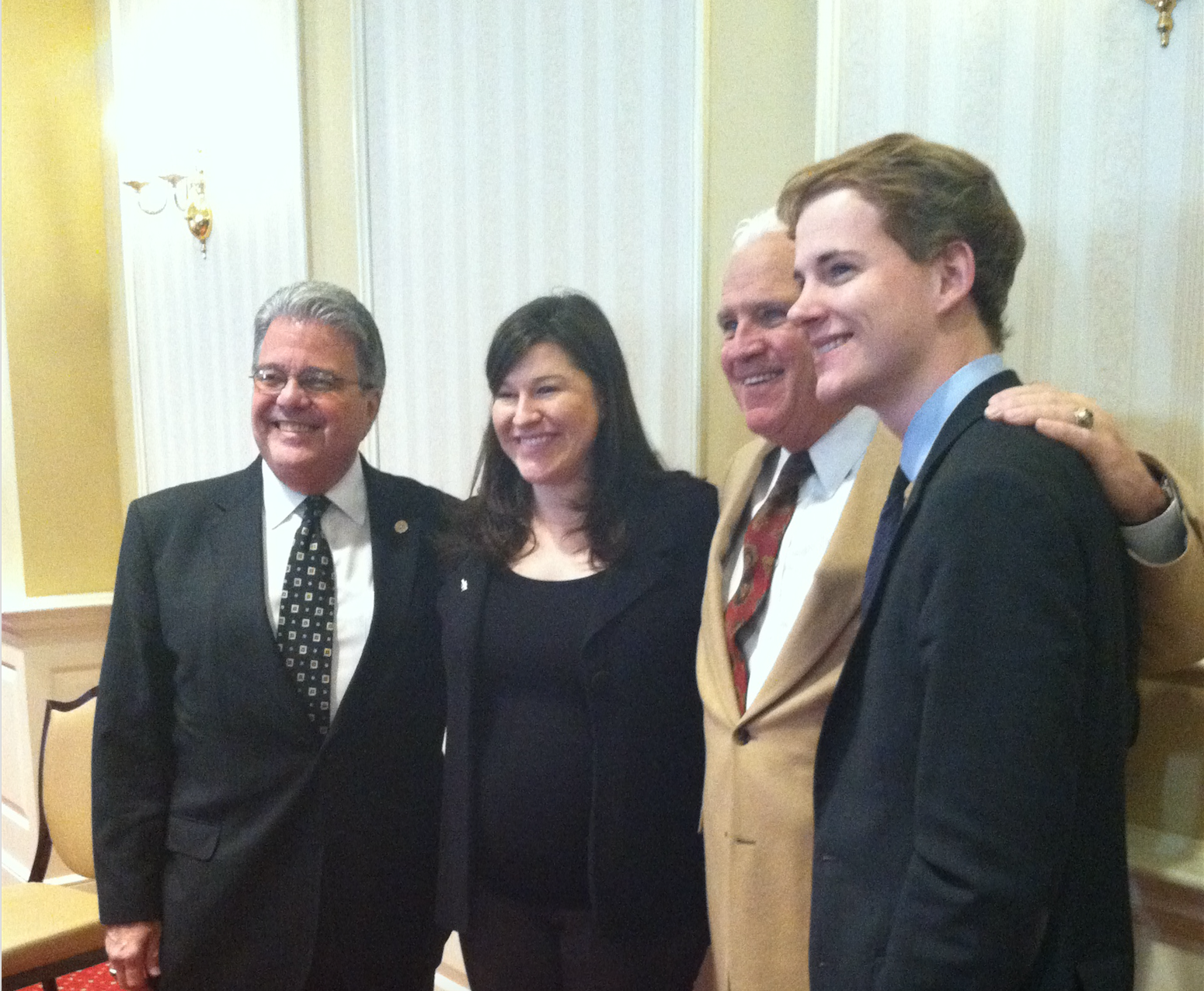Faculty, staff and students from the University System of Maryland have lobbied state legislators in the past, but this year they wanted to do something different.
“We have always done these individual [lobby] days,” said Dana Wimbish, chairwoman of the system’s Council of University System Staff. “The past couple of years we’ve talked about doing something where the students, faculty and the staff went with one voice at one time to create a bigger impact for the system as a whole.”
About 150 members of the system’s staff, faculty and student councils came together for their first joint USM Advocacy Day in Annapolis on Feb. 11 to urge state legislators to approve Gov. Larry Hogan’s proposed system budget for fiscal year 2017.
Other attendees included system leaders such as Chancellor Robert Caret, University of Maryland President Wallace Loh and other institution presidents, state Senate President Thomas V. Mike Miller Jr. and the USM Foundation, a system advocacy group.
“By supporting the USM, [legislators] are supporting students,” Wimbish said. “They’re supporting faculty, they’re supporting the employees, but they’re also bringing in money through the partnerships that we have with other businesses and through research.”
The state provides almost a fifth of the system’s total budget — $5.1 billion this fiscal year — making it exceedingly important that the budget passes as is, said Patrick Hogan, the system’s vice chancellor for government relations.
“In the legislature, for the operating budget, they can only make reductions; they can’t add to the budget,” Patrick Hogan said. “So our charge is to make the case that they shouldn’t make any reductions.”
The day began with Hogan addressing the system councils, followed by a period of scheduled meetings with senators and delegates, Wimbish said. After a lunch reception, there was more time for meetings as well as the opportunity to drop by legislators’ offices, she added.
Beyond speaking with senators and delegates on the budget committees, these meetings offered attendees a chance to bring up other topics of interest, said Student Government Association President Patrick Ronk, who was one of four members of this university’s SGA to attend the event.
One issue this university’s SGA is honing in on this year is pushing for business tax credits for businesses that hire interns, which is “hopefully going to create a couple more paid internships for students at Maryland and the entire USM,” Ronk said.
The Council of University System Staff also focused on other agendas, including a bill supporting a tax-free period for university students to buy textbooks, Wimbish said.
Legislators responded positively to everyone’s lobbying efforts, Patrick Hogan said, particularly to students who came out to advocate.
“The legislature, the state is making a big investment in our institutions, and it’s good for them to see the students, which is a return on that investment,” Patrick Hogan said.
Ronk, who said he has been involved in similar lobby days over the past four years, said he liked the new lobbying setup because it gave students, staff and faculty a rare chance to collaborate.
“It was a really good way to get professors, students and administrators all there together having these meetings because we more or less have the same message: invest in higher education,” Ronk said.
Wimbish said her council had to introduce itself and its message frequently throughout the meeting.
“There were a few new members who came in with the group last year, and so there was a bit of having to sort of let them know who [the Council of University System Staff] was, and who all of these councils were,” Wimbish said. “It was a chance for us to introduce ourselves to them and for them to know who we’re speaking for.”
One improvement for next time, Ronk said, would be getting more food.
“We ran out of food within an hour because there were so many people there talking to students and actually learning about higher education,” Ronk said. “Any event where you run out of food has to be considered a success.”



